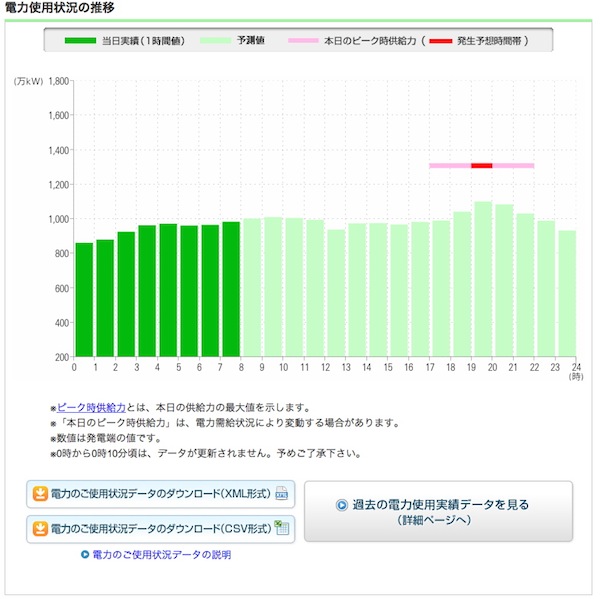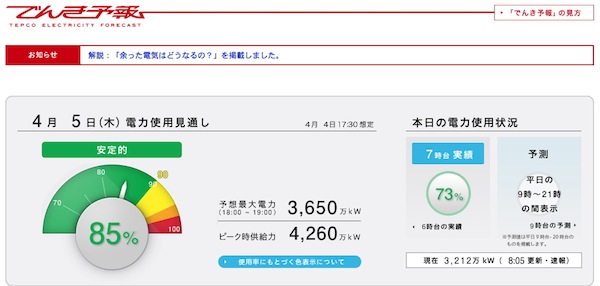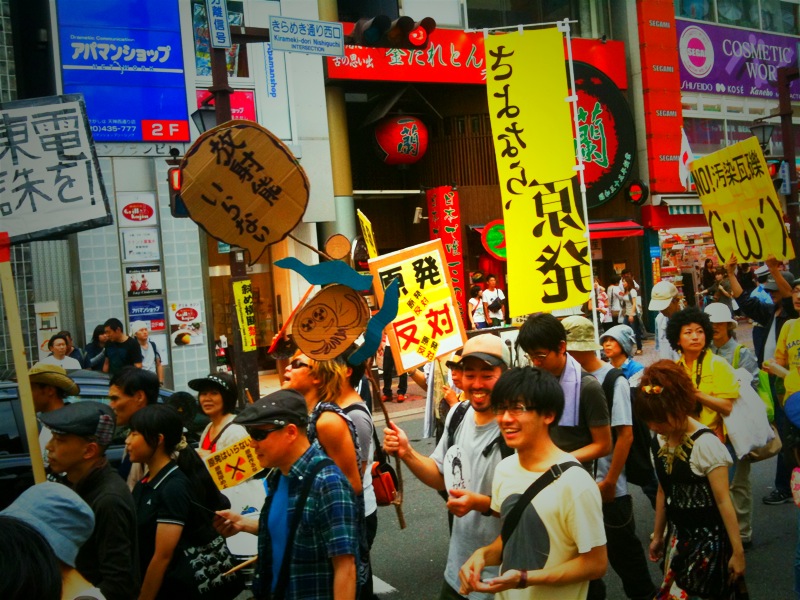
There was a rather large anti-nuclear power demonstration in Fukuoka last Sunday, six months to the day that the earthquake and tsunami devastated the Tôhoku region of Japan and set into motion a chain of events that would lead to a core meltdown of the Fukushima nuclear reactors.
I’ve been watching the anti-nuke movement with great interest, not only because I have completely lost faith in the safety of Japan’s nuclear power plants, but because it has in recent decades been quite unusual for young Japanese to take an active interest in politics.
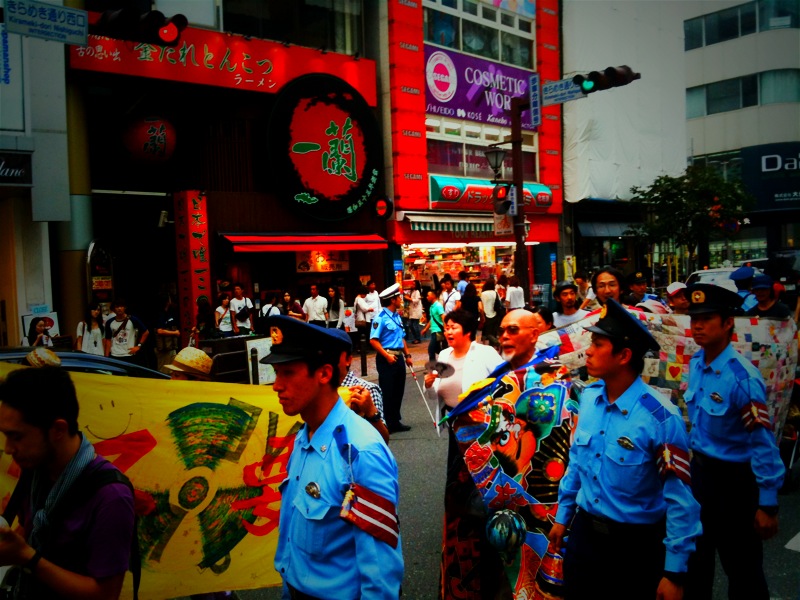
The demonstrators’ main demand that day was for the nuclear power plants at Genkai which are operated by Kyûshu Electric (Kyûden) to be closed down.
Three months ago, on the third anniversary of the earthquake and tsunami, a similar demonstration was held. One of the most striking posters I saw that day featured a map of Japan with the Genkai nuclear power plants in the southwest, a radioactive cloud billowing from the plant, and arrows indicating the northeasterly direction of the prevailing winds. A sentence below claimed that if Genkai were to suffer a fate similar to that of Fukushima, all of Japan would be destroyed. A bit hyperbolic, perhaps, but it did get me thinking.
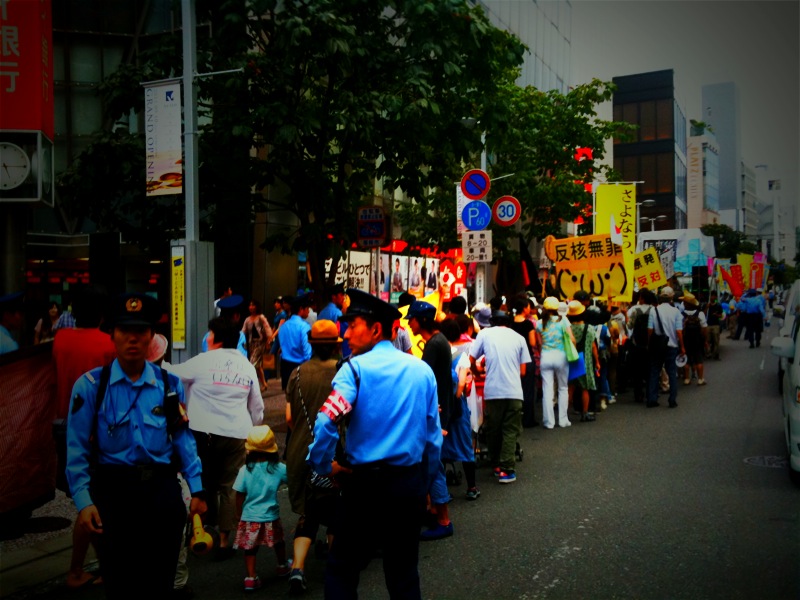
Last night there was a special on TV Tôkyô called Akira Ikegami’s Special: Thinking about Energy (池上彰のエネルギーを考えるSP). Ikegami, a veteran journalist and TV presenter most famous for a weekly news program he used to host (そうだったのか!池上彰の学べるニュース), has a remarkable talent for tackling difficult issues and making them accessible to ordinary TV audiences. (Hell, even I can understand what he’s usually trying to say.)
In last night’s special, he first introduced the problem facing today, namely that Japan needs energy and it’s current method of producing it is flawed. Since the Tôhoku earthquake all but eleven of Japan’s 54 nuclear power reactors have stopped producing electricity as they undergo safety reviews. According to Ikegami, it is highly unlikely that any of the nuclear power plants will be allowed to go back on-line. What is more, the remaining 11 nukes still producing electricity today, including two of the four at Genkai, will probably be shut down by next spring.
Meaning?
The demonstrators will soon have their demands met. Of course, there is still the problem of the fuel rods, which are so hot that it will take a minimum of ten years to cool them down. (This alone is pure madness to me. And, don’t get me started on nuclear waste.)
In terms of energy production, Ikegami offered another interesting statistic: where 33% of the nation’s energy production had been nuclear before the Fukushima accident, today that figure stands at only 14%. (Thermal power production has gone from 62% to 77%, hydropower from 5% to 9%) This was another demand of anti-nuke demonstrators. Instead of using nuclear power plants to supply the base electricity demand, they wanted nuclear energy to be used to produce supplemental electricity only at times when demand exceeded what could be produced by other means.
After highlighting the problem of Japan’s energy needs, Ikegami went on to discuss some of the more commonly proposed alternatives--wind, solar, tidal, and geothermal energy--and their advantages and disadvantages. In short, he argued that high costs and other limitations would mean that none of these would be viable sources of power for at least the next ten years. In the long term, however, shale gas, high-tech coal-burning plants like one in Yokohama which produces very little emission-wise, and frozen methane should provide cheap, clean, and plentiful energy for the next century. Knock on wood.
 Thursday, April 5, 2012 at 9:25AM
Thursday, April 5, 2012 at 9:25AM
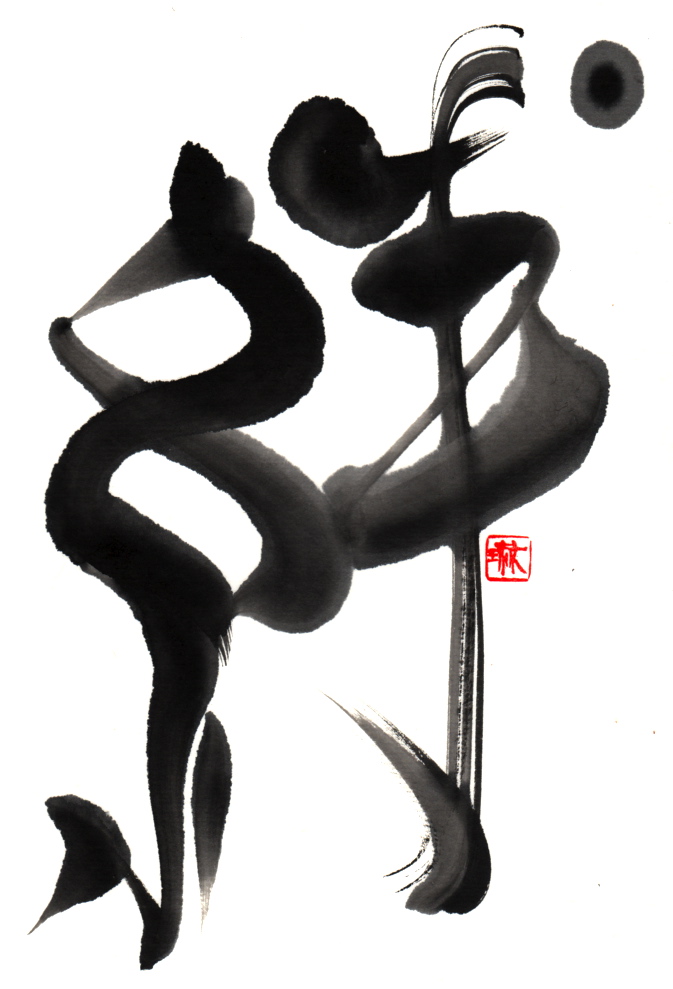 Kizuna (絆, bonds, ties) was one of a number of buzzwords to become popular in the wake of last year’s Tôhoku earthquake and tsunami. According to The Japan Times the word was used “to emphasize the importance of human sympathy and relationships in helping survivors of the monster disaster.”
Kizuna (絆, bonds, ties) was one of a number of buzzwords to become popular in the wake of last year’s Tôhoku earthquake and tsunami. According to The Japan Times the word was used “to emphasize the importance of human sympathy and relationships in helping survivors of the monster disaster.”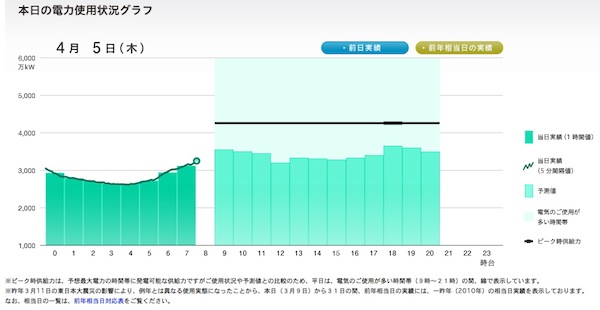
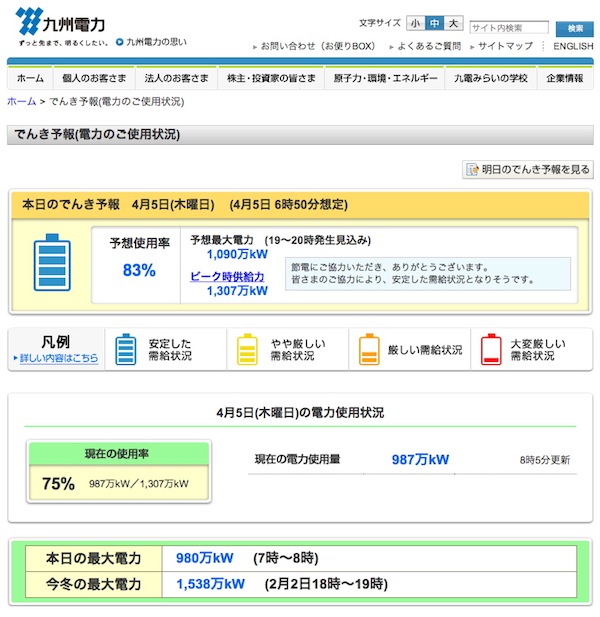 Kyûshû Electric's electricity forecast
Kyûshû Electric's electricity forecast